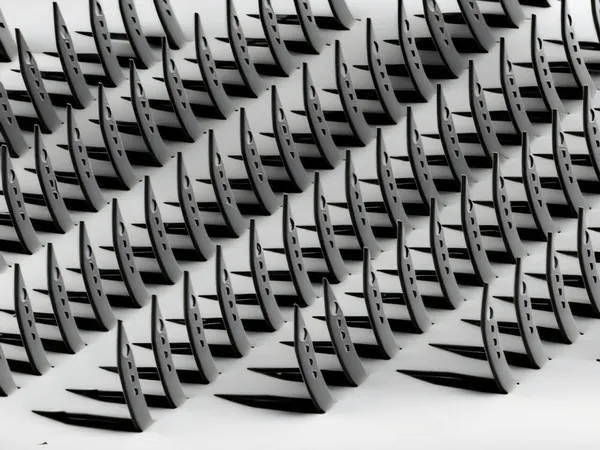
Revolutionary 3D Neuroprobes Inspired by Kirigami Art Could Transform Neuroscience
2025-06-16
Author: Daniel
A Breakthrough in Neurotechnology
A dynamic team from the Institute of Biological Information Processing (IBI-3) at Forschungszentrum Jülich has made a groundbreaking leap in neuroscience by developing flexible, three-dimensional neuroprobes inspired by the intricate Japanese art of kirigami.
From Art to Science: The Kirigami Influence
Unlike traditional origami, which focuses solely on folding, kirigami involves cutting that allows for stunning three-dimensional shapes. This innovative technique enables researchers to delve deep into the brain's neural tissues, opening new frontiers for understanding brain activity and could soon reshape medical practices involving neurotechnology.
Crafting 3D Microelectrodes with Precision
These novel 3D microelectrode arrays (MEAs) are ingeniously crafted from ultrathin, flexible polymers. Utilizing a unique thermal molding method known as 'matched-die forming,' the research team can efficiently shape these polymers into freestanding structures, each thinner than a human hair, complete with multiple electrodes that record electrical signals from various brain layers.
"Our technique distinguishes itself by allowing us to fold up to 128 MEAs at once—efficiently, reliably, and without involving toxic materials," shares Marie Jung, the lead researcher. This innovation not only streamlines the manufacturing process but is also poised to revolutionize clinical applications.
Flexible, Biocompatible Materials for Enhanced Safety
Traditional 3D electrode methods often depend on rigid materials or complex manual assembly, but this new strategy leverages flexible, biocompatible films that significantly reduce the risk of adverse reactions in brain tissues. Designed as thin as a few micrometers yet strong enough to perform effectively, these probes can seamlessly integrate into their biological environment.
Success in the Lab and Beyond
The probes underwent extensive lab testing for their electrochemical efficiency and durability before being trialed on brain slices from epilepsy patients, and even in live mice! The results were astounding, as they successfully captured crucial brain signals, including epileptic activity and sensory responses.
The Future of Neurotechnology: Potential Medical Applications
Looking ahead, these state-of-the-art neuroprobes have the potential to usher in a new era of medical advancements, such as visual prosthetics and targeted brain stimulation techniques. The high number of integrated electrodes will not only enhance brain signal recording but may also enable precise stimulation in critical areas like the retina.
"Our next steps involve enhancing the electrode coatings and miniaturizing the circuitry to create ultra-efficient implants that can reliably read from over 512 electrodes," says Rincón Montes. With these advances, the future of brain-computer interfaces and therapeutic applications is bright.


 Brasil (PT)
Brasil (PT)
 Canada (EN)
Canada (EN)
 Chile (ES)
Chile (ES)
 Česko (CS)
Česko (CS)
 대한민국 (KO)
대한민국 (KO)
 España (ES)
España (ES)
 France (FR)
France (FR)
 Hong Kong (EN)
Hong Kong (EN)
 Italia (IT)
Italia (IT)
 日本 (JA)
日本 (JA)
 Magyarország (HU)
Magyarország (HU)
 Norge (NO)
Norge (NO)
 Polska (PL)
Polska (PL)
 Schweiz (DE)
Schweiz (DE)
 Singapore (EN)
Singapore (EN)
 Sverige (SV)
Sverige (SV)
 Suomi (FI)
Suomi (FI)
 Türkiye (TR)
Türkiye (TR)
 الإمارات العربية المتحدة (AR)
الإمارات العربية المتحدة (AR)